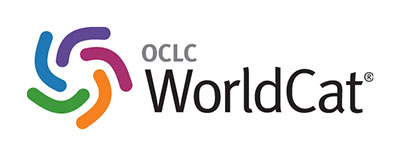Español
DOI:
https://doi.org/10.26871/killcanasalud.v7i3.1244Keywords:
Malocclusion, Angle Class III Malocclusion, Corrective orthodonticsAbstract
Abstract
Objective: Report dental and skeletal changes of Rapid Maxillary Expans and facial mask in Class III malocclusions. Clinical case: The therapy includes an expansion phase, placing an orthopedic appliance (Hyrax) to separate the maxillary sutures. Subsequently, the protraction phase begins with the positioning of the facial mask, aiming to bring the maxilla forward and downward. Dental changes in the sagittal direction were a positive overjet of 1 mm, neutral canine relation, and an overjet of 0.4 mm in the vertical direction. The Alt-RAMEC protocol was applied, correcting the crossbite and increasing the upper and lower dental arch length by 6 mm. Skeletal changes were SNA angle increased by 2.2°, SNB remained the same, the incisal angle decreased by 6 mm, and the ANB angle increased by 2.4°. Conclusion: The described changes were achieved by applying rapid maxillary expansion and a facial mask, which are considered one of the most common therapies to correct Class III malocclusions in early mixed dentition.
Downloads
References
Referencias Bibliográficas
Pascual Sánchez D, Bruna del Cojo M, Prado Simón L, Arias Macías C. Prevalencia de las maloclusiones según la clasificación de Angle en una población universitaria. Cient. Dent. 2021; 18(1): 15-20 DOI: 10.23857/dc.v2i3.65
Rodríguez P, Estrada M, Meneses A. Tratamiento de la maloclusión Clase III con protracción maxilar: Reporte de Caso. Rev Estomatol Herediana. 2017; 27(3): 180-190 DOI: https://doi.org/10.20453/reh.v27i3.3202
Da Silva de Carballo L. Consideraciones generales en el diagnóstico y tratamiento de las Maloclusiones Clase III. Revista Latinoamericana de Ortodoncia y Odontopediatría [Internet]. 2014 [citado el 3 de noviembre de 2022]; 12(3): 88-97 Disponible en: https://www.ortodoncia.ws/publicaciones/2005/art-14/#
Pérez A, Gallegos F, Hernández M, Torres P, Cuevas P, Fierro C. Riesgos asociados al uso de Expansión Rápida del Maxilar. Avances en odontoestomatología. 2020; 36(1): 21-26 DOI: https://dx.doi.org/10.4321/s0213-12852020000100003
Hernández-Silva JA, Rodríguez-Manjarrés C, Martínez-Ávila JM. Tratamiento de la maloclusión clase III con máscara facial y hyrax híbrido, Protocolo Alt-ramec. Rev Nac Odontol. 2018;13(26):1-9. DOI: http://dx.doi.org/10.16925/od.v13i26.2045
Ramírez-Mendoza J, Muñoz-Martínez C, Gallegos-Ramírez A, Rueda-Ventura M. Maloclusión Clase III. Salud en Tabasco [Internet]. 2015 [citado el 3 de noviembre 2022]; 16(2): 944-950 Disponible en: http://www.redalyc.org/articulo.oa?id=48720965007
Avalos-González G, Paz-Cristóbal A. Maloclusión Clase III. Rev Tamé [Internet]. 2014 [citado el 5 de noviembre 2022]; 3(8): 279-282 Disponible en: https://www.imbiomed.com.mx/articulo.php?id=104141
Reyes M, Comas R, Martínez M, Mok P. Expansión rápida del maxilar con el tornillo Hyrax en un adolescente Quick expansion of the maxilla with the screw Hyrax in an adolescent. MEDISAN [Internet] 2014 [citado el 5 de noviembre 2022];19(3):417-422 Disponible en: http://scielo.sld.cu/scielo.php?script=sci_arttext&pid=S1029-30192015000300014&lng=es.
Miranda F, Bastos J, Dos Santos A, Janson G, Pereira J, Garib D. Dentoskeletal comparison of miniscrew-anchored maxillary protraction with hybrid and conventional hyrax expanders: A randomized clinical trial. American Journal of Orthodontics and Dentofacial Orthopedics. 2021; 10(2): 1-10 DOI: https://doi.org/10.1016/j.ajodo.2021.02.017
Ngan P, Wilmes B, Drescher D, Martin C, Weaver B, Gunel E. Comparison of two maxillary protraction protocols: tooth-borne versus bone-anchored protraction facemask treatment. Prog Orthod. 2015; 16(2):26-32 DOI: 10.1186/s40510-015-0096-7.
Willmann JH, Nienkemper M, Tarraf NE, Wilmes B, Drescher D. Early Class III treatment with Hybrid-Hyrax - Facemask in comparison to Hybrid-Hyrax-Mentoplate - skeletal and dental outcomes. Prog Orthod. 2018; 19(1):42-55 DOI: 10.1186/s40510-018-0239-8.
Masucci C, Franchi L, Giuntini V, Defraia E. Short-term effects of a modified Alt-RAMEC protocol for early treatment of Class III malocclusion: a controlled study. Orthod Craniofac Res. 2016;17(4):259–269. DOI: http://dx.doi.org/10.1111/ocr.12051
Navarrete E, Pita M A. Factores relacionados con maloclusiones en niños ecuatorianos de 3-9 años de edad. Rev cubana Estomatol [Internet]. 2020 [citado el 25 de noviembre 2022]; 57 (2): 11-21. Disponible en: http://scielo.sld.cu/scielo.php?script=sci_arttext&pid=S0034-75072020000200009&lng=es.
Stark TR, Pozo-Alonso M, Daniels R, Camacho M. Pediatric Considerations for Dental Sleep Medicine. Sleep Med Clin. 2018;13(4):531-548. DOI: 10.1016/j.jsmc.2018.08.002
Liou EJ-W, Tsai W-C. A new protocol for maxillary protraction in cleft patients: repetitive weekly protocol of alternate rapid maxillary expansions and constrictions. Cleft Palate Craniofac J. 2015;42(2):121–127. Disponible en: http://dx.doi.org/10.1597/03-107.1
Ramos L, Grageda E. Tratamiento de una maloclusión CIII tratada con máscara facial, tracción maxilar anclada a miniimplantes y tratamiento ortodóntico. Reporte de un caso. Revista Mexicana de Ortodoncia. 2017;5 (3): 176-183 DOI: 10.1016/j.rmo.2017.12.008
Silva I, Tort F, Acuña P, Villalon P. Disyunción maxilar rápida asistida con microtornillos en pacientes en crecimiento con deficiencia maxilar transversal. Int. J. Inter. Dent [Internet] 2021; 14(1): 61-66 Disponible en: http://www.redalyc.org/articulo.oa?id=610066943013










